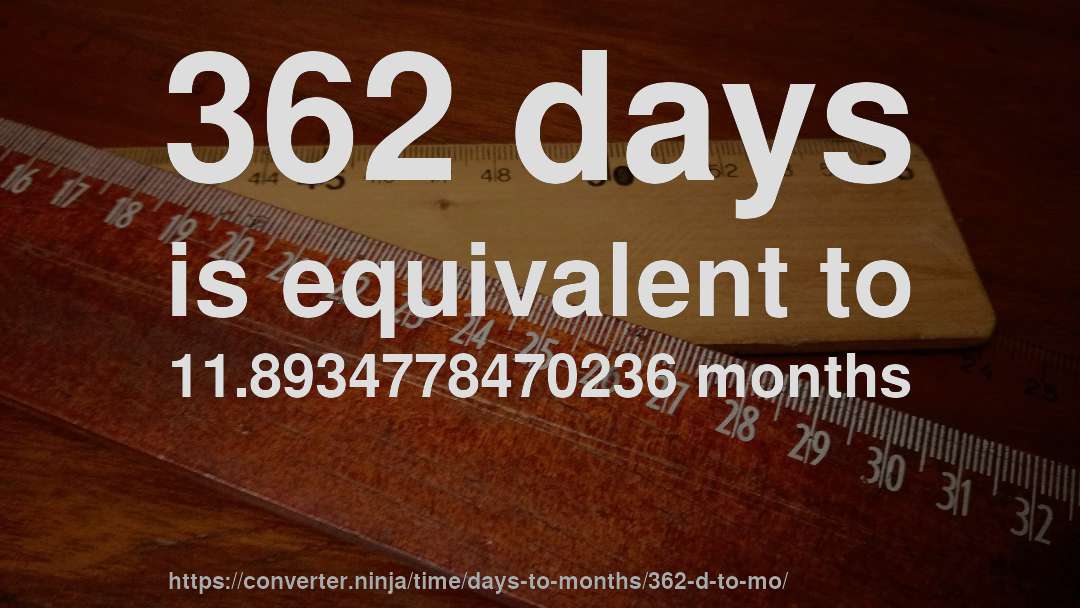
362 days is equivalent to 11.8934778470236 months.
We know (by definition) that: 1 d ≈ 0.032854911 mo
We can set up a proportion to solve for the number of months.
1 d 362 d ≈ 0.032854911 mo x moNow, we cross multiply to solve for our unknown x:
x mo ≈ 362 d 1 d * 0.032854911 mo → x mo ≈ 11.893477782 moConclusion: 362 d ≈ 11.893477782 mo
The inverse of the conversion factor is that 1 month is equal to 0.0840796958519797 times 362 days.
It can also be expressed as: 362 days is equal to 1 0.0840796958519797 months.
Approximation
An approximate numerical result would be: three hundred and sixty-two days is about eleven point eight nine months, or alternatively, a month is about zero point zero eight times three hundred and sixty-two days.
Units involved
This is how the units in this conversion are defined:
Days
"A day is a unit of time. In common usage, it is either an interval equal to 24 hours or daytime, the consecutive period of time during which the Sun is above the horizon. The period of time during which the Earth completes one rotation with respect to the Sun is called a solar day. Several definitions of this universal human concept are used according to context, need and convenience. In 1960, the second was redefined in terms of the orbital motion of the Earth, and was designated the SI base unit of time. The unit of measurement day, redefined in 1960 as 86 400 SI seconds and symbolized d, is not an SI unit, but is accepted for use with SI. A civil day is usually 86 400 seconds, plus or minus a possible leap second in Coordinated Universal Time (UTC), and occasionally plus or minus an hour in those locations that change from or to daylight saving time."
Months
"A month is a unit of time, used with calendars, which is approximately as long as a natural period related to the motion of the Moon; month and Moon are cognates. The traditional concept arose with the cycle of moon phases; such months (lunations) are synodic months and last approximately 29.53 days. From excavated tally sticks, researchers have deduced that people counted days in relation to the Moons phases as early as the Paleolithic age. Synodic months, based on the Moon s orbital period with respect to the Earth-Sun line, are still the basis of many calendars today, and are used to divide the year."
[1] The precision is 15 significant digits (fourteen digits to the right of the decimal point).
Results may contain small errors due to the use of floating point arithmetic.ncG1vNJzZmibn6PDpr7Tnqlnppmjt6J706KknmeUlsa0edOoZKannqm1tHuSb2lmnF2pvG65zmg%3D